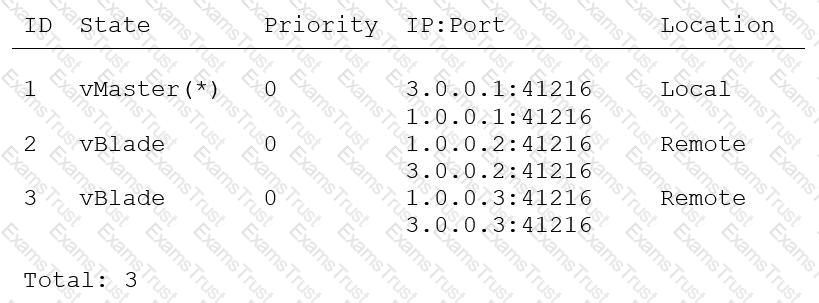In the following configuration:

Where network 3.0.0.x on each device is on a VE interface dedicated to aVCS traffic, what must you do to ensure that command “device-context x” always succeeds?
Select the statement that describes aXAPI authentication and authorization requirements:
What do we know about the state of the system from the CLI prompt? (Choose two.)
A1-vMaster[1/1][Helium2]#
Which statement is true about the requirements for ACOS devices that are part of an aVCS cluster?
When you execute a reboot command on the vMaster, how is aVCS Chassis affected?
You are planning an Active-Active-Active VRRP-A three-device deployment that, upon failover of any device, distributes the load from a single device to both standby devices simultaneously. How many VRIDs are required?
When VRRP-A is enabled on a device with multiple partitions, which statement about VRID 0 is correct?
What information is typically submitted with every aXAPI call after the initial login is complete?
You upgraded the boot image and changed the boot pointer to the new image using bootimage command. Which of the following operations will load the new image?